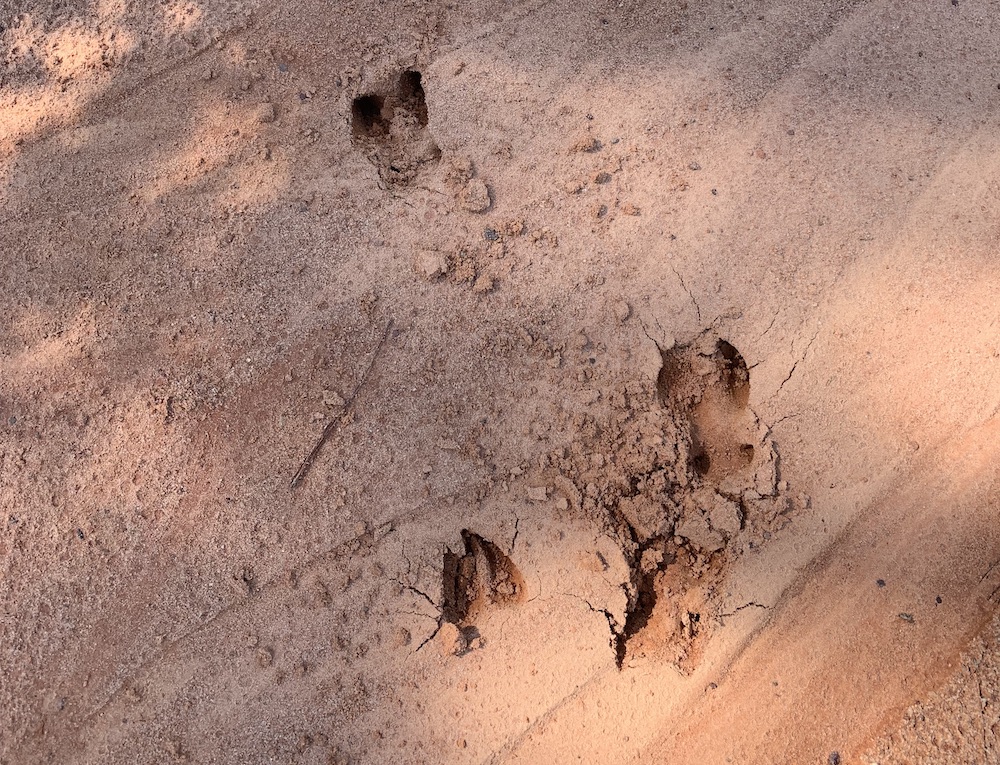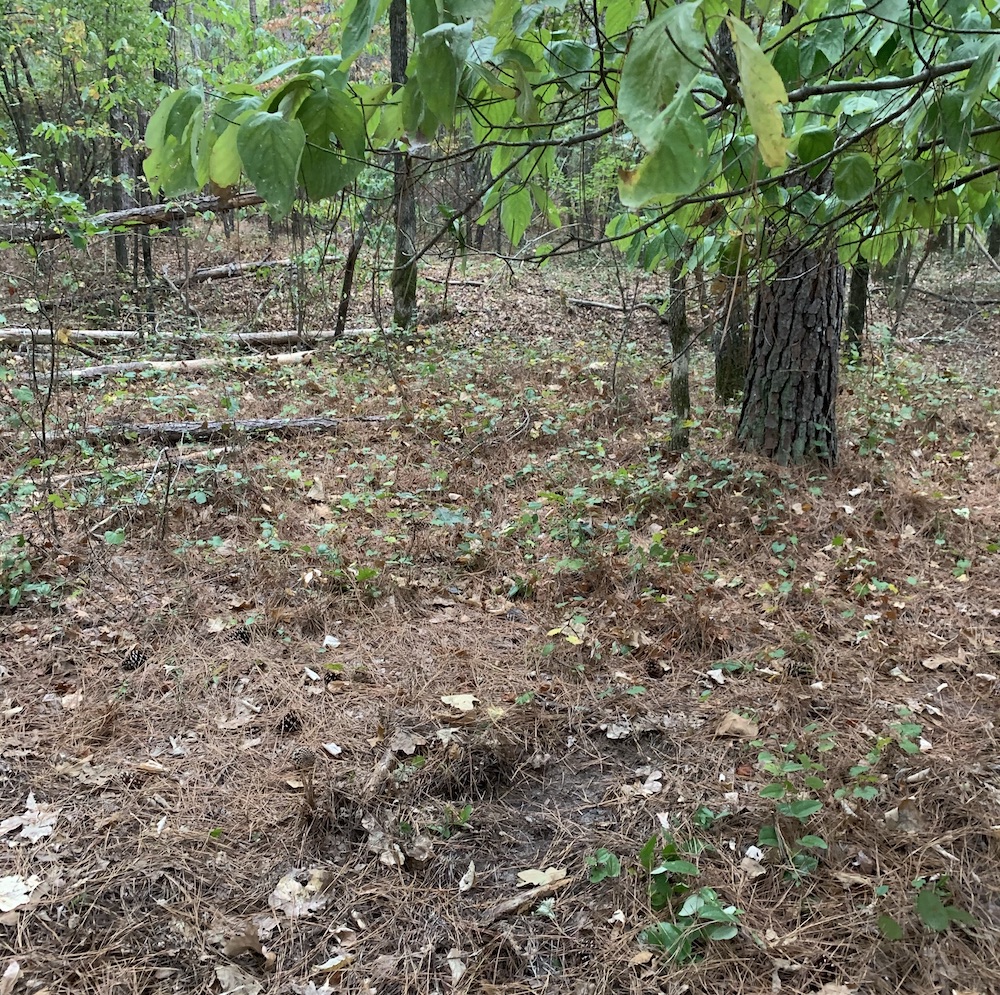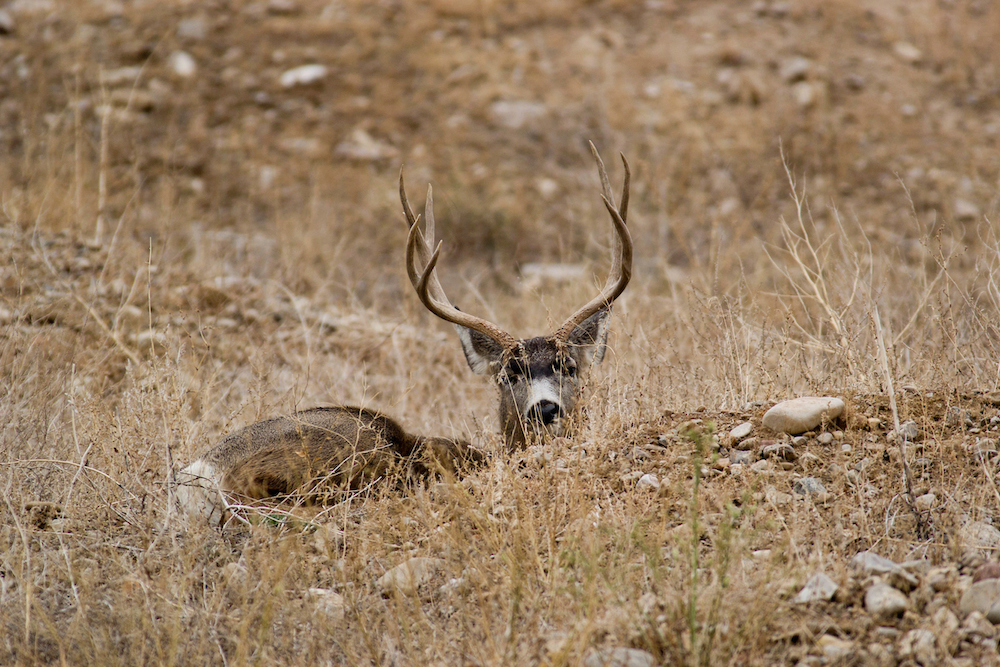Imagine being dropped in the middle of nowhere with instructions to find the nearest town. You’d probably look for road signs that could provide clues to your location or what to expect down the road. If you followed the signs, eventually you’d probably find the town.
Now imagine being dropped in the middle of the woods with instructions to find a deer. What would you do? Like the situation above, you’d probably look for signs. Deer sign isn’t made of colorful metal sheets with wooden posts, though. It’s tracks, trails, droppings, rubs, scrapes, beds and browse.
Learning to identify and read deer sign correctly will help you get that much closer to seeing — and hopefully arrowing — a deer. Let’s examine the types of deer sign you should know.

Deer have hoofed toes that come together at the front. The tracks range in size from 1 to 4 inches in length and 1 to 2 ½ inches wide. Bucks usually have the largest tracks, followed by does and fawns. Because bucks are bigger and heavier, you might be able to see dewclaw imprints at the base of the track, and the hoof imprints are often spread wider. Large or running does can leave dewclaw imprints and wide tracks too, though, so don’t rely on tracks alone to tell you you’re onto a buck.
Tracks are easy to spot and common to find, so a lot of hunters ignore them. However, evaluating a track can provide lots of information about the deer, including how big it was, which direction it was headed, if it was walking or running and if it was alone or with other deer. Look for fresh tracks, which will have clearly defined edges. Wind, rain and time all cause tracks to fade and become less visible.
A high concentration of tracks in a narrow path is called a deer trail. These are often found between bedding and feeding areas because deer walk the same route regularly, creating a trail. Trails can also point you toward a pinch point or funnel, which is a terrain feature that constricts deer movement to a specific area, and is usually a great spot to hunt. If the trail is beaten down, it’s heavily trafficked. Examine it for fresh deer tracks and droppings to determine if it’s currently being used.
Deer poop resembles elongated ½- to 1-inch-long pellets, and it’s generally black or dark brown. In late spring and early summer when food contains more water, the pellets are soft and may stick together in one large dropping or clump. The pellets look like chocolate-covered raisins or almonds. When they’re shiny, they’re usually wet and most likely fresh. Dull, dry pellets are likely old. If you’re finding a lot of fresh droppings in one place, it’s likely a feeding area and a potentially good hunting spot.

Bucks create rubs when they rake their antlers and forehead on saplings, brush and small trees. The process usually shreds and peels the bark, leaving the marking bowhunters call a rub. Fresh rubs appear wet, and bark shavings litter the tree’s base. Sap often oozes from antler-gouged bark. As the rub ages, it dries, its vibrant colors fade and fallen leaves soon cover the shavings.
Rubs are a buck’s way of communicating to other deer because the scent gland on their foreheads is unique to the individual animal. Big bucks usually rub big trees, but that’s not always the case. Little bucks have been known to rub big trees and vice versa. You’ll find rubs on random, individual trees, on a line of trees (known as a rub line) or on a cluster of trees in a specific area. Individual rubs are often sporadic and left casually. Rub lines or cluster rubs usually indicate that a buck frequents the area and checks back to mark its territory.

A scrape is a bare patch of ground shaped like an oval or triangle with an overhanging branch. Deer paw at the ground, urinate in the area and rub their head on the branch to mark their territory. It’s another way deer communicate, bucks and does alike. Fresh, active scrapes appear moist, smell musky and contain deer tracks. As they age, scrapes lose their smell and accumulate leaves, pine needles and other debris.
Large scrapes, about the size of a garbage can lid with mangled overhead branches, are usually visited by multiple deer. Scraping activity peaks before the rut as deer display that they’re ready to breed, then drops off during the rut when deer are actively breeding.
Quick tip: If you’re struggling to remember the difference between rubs and scrapes, remember one of these catchy phrases: “tines shake the pines,” or “antlers rub trees and hooves scrape leaves.” You can learn more about these signs in the Bowhunting 360 article “Rut-Hunting Strategies: Capitalize on Rubs and Scrapes.”

Deer beds are oval or shaped like a kidney bean. They’re easy to identify in the snow or tall grass because the deer’s body weight will mat down the foliage. Deer typically bed in thick cover during the day to rest, sleep and hide from predators.
Between feeding sessions, deer usually bed together in a “bedding area.” Typical bedding areas are dense and have a water source nearby and some undergrowth, which serves as protection and an occasional snack. Learn how to identify bedding areas by reading Bowhunting 360’s article “Strategies for Finding and Hunting Whitetail Bedding Areas.”

Deer are herbivores (they feed on plants) and must eat to survive, so hunters should look for deer browse and food sources as another deer sign. Deer browse on leaves, twigs, buds and the stems of shrubs and trees. Deer don’t have upper incisors, so their browse is evident by the rough edges they leave on plant foliage, whereas the sharp incisors of rabbits create a clean cut. Find what deer eat, and you’ll likely find deer.
Finding where deer eat, sleep, walk, poop and communicate with other deer is essential for all hunters. Once you know how to read deer sign, look for places with a lot of sign so you can position yourself for success.
Ready to test your knowledge? Take Bowhunting 360’s quiz “How Much Do You Know About Deer Sign?” Then, head to the woods to put your knowledge to work and find your own deer sign.